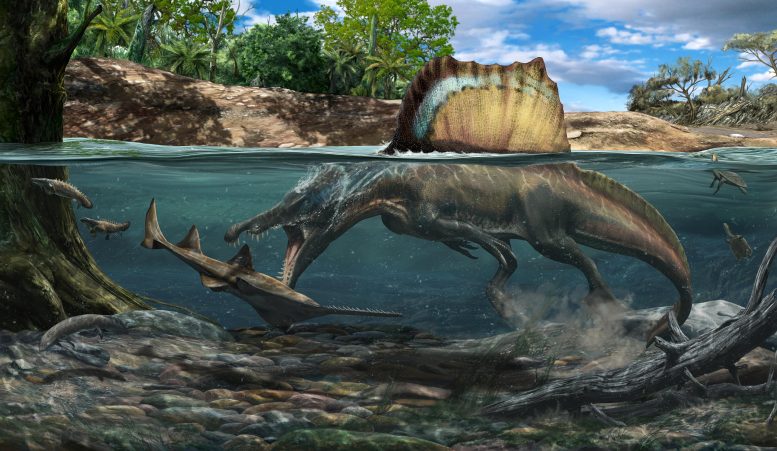
Spinosaurus, the longest predatory dinosaur known, is opening its elongate jaws, studded with conical teeth, to catch a sawskate. Contrary to previous suggestions, this animal was not a heron-like wader – it was a “river monster,” actively pursuing prey in a vast river system located in modern-day North Africa. Dense bones in the skeleton of Spinosaurus strongly suggest it spent a substantial amount of time submerged in the water. Credit: Davide Bonadonna
Its close cousin Baryonyx probably swam too, but Suchomimus might’ve waded like a heron.
Spinosaurus is the biggest carnivorous dinosaur ever discovered—even bigger than T. rex—but the way it hunted has been a subject of debate for decades. It’s hard to guess the behavior of an animal that we only know from fossils; based on its skeleton, some scientists have proposed that Spinosaurus could swim, but others believe that it just waded in the water like a heron. Since looking at the anatomy of spinosaurid dinosaurs wasn’t enough to solve the mystery, a group of paleontologists are publishing a new study in Nature that takes a different approach: examining the density of their bones. By analyzing the density of spinosaurid bones and comparing them to other animals like penguins, hippos, and alligators, the team found that Spinosaurus and its close relative Baryonyx had dense bones that likely would have allowed them to submerge themselves underwater to hunt. Meanwhile, another related dinosaur called Suchomimus had lighter bones that would have made swimming more difficult, so it likely waded instead or spent more time on land like other dinosaurs.
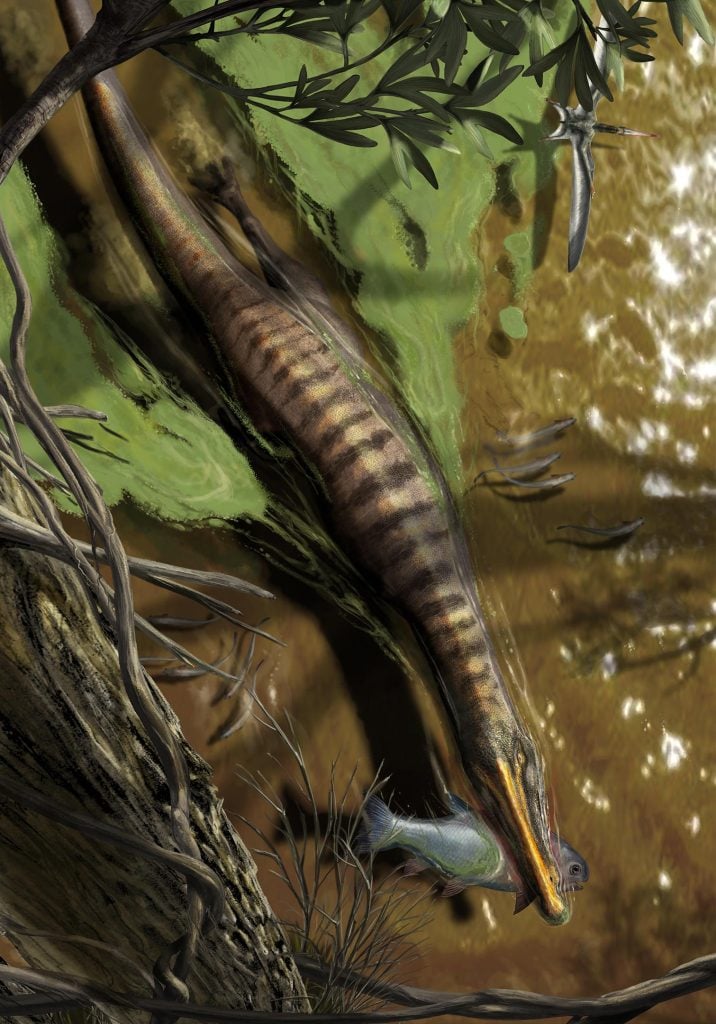
Baryonyx, from Surrey in England, swims through an ancient river with a fish in its jaws. Like its much larger African relative Spinosaurus, Baryonyx had dense bones, suggesting that it too spent much of its time submerged in water. It was previously thought to have been less aquatic than its Saharan relative. Credit: Davide Bonadonna
“The fossil record is tricky—among spinosaurids, there are only a handful of partial skeletons, and we don’t have any complete skeletons for these dinosaurs,” says Matteo Fabbri, a postdoctoral researcher at the Field Museum and the lead author of the study in Nature. “Other studies have focused on interpretation of anatomy, but clearly if there are such opposite interpretations regarding the same bones, this is already a clear signal that maybe those are not the best proxies for us to infer the ecology of extinct animals.”
All life initially came from the water, and most groups of terrestrial vertebrates contain members that have returned to it—for instance, while most mammals are land-dwellers, we’ve got whales and seals that live in the ocean, and other mammals like otters, tapirs, and hippos that are semi-aquatic. Birds have penguins and cormorants; reptiles have alligators, crocodiles, marine iguanas, and sea snakes. For a long time, non-avian dinosaurs (the dinos that didn’t branch off into birds) were the only group that didn’t have any water-dwellers. That changed in 2014, when a new Spinosaurus skeleton was described by Nizar Ibrahim at the University of Portsmouth.
Scientists already knew that spinosaurids spent some time by water—their long, croc-like jaws and cone-shaped teeth are similar to other aquatic predators’, and some fossils had been found with bellies full of fish. But the new Spinosaurus specimen described in 2014 had retracted nostrils, short hind legs, paddle-like feet, and a fin-like tail: all signs that pointed to an aquatic lifestyle. But researchers have continued to debate whether spinosaurids actually swam for their food or if they just stood in the shallows and dipped their heads in to snap up prey. This continued back-and-forth led Fabbri and his colleagues to try to find another way to solve the problem.
“The idea for our study was, okay, clearly we can interpret the fossil data in different ways. But what about the general physical laws?” says Fabbri. “There are certain laws that are applicable to any organism on this planet. One of these laws regards density and the capability of submerging into water.”
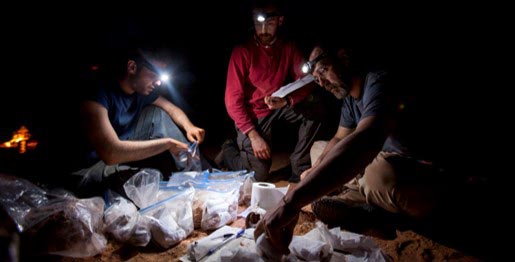
Simone Maganuco (middle), Davide Bonadonna (right) and lead author Matteo Fabbri (left) organizing fossils at night. Credit: Nanni Fontana
Across the animal kingdom, bone density is a tell in terms of whether that animal is able to sink beneath the surface and swim. “Previous studies have shown that mammals adapted to water have dense, compact bone in their postcranial skeletons,” says Fabbri. Dense bone works as buoyancy control and allows the animal to submerge itself.
“We thought, okay, maybe this is the proxy we can use to determine if spinosaurids were actually aquatic,” says Fabbri.
Fabbri and his colleagues, including co-corresponding authors Guillermo Navalón at Cambridge University and Roger Benson at Oxford University, put together a dataset of femur and rib bone cross-sections from 250 species of extinct and living animals, both land-dwellers and water-dwellers. The researchers compared these cross-sections to cross-sections of bone from Spinosaurus and its relatives Baryonyx and Suchomimus. “We had to divide this study into successive steps,” says Fabbri. “The first one was to understand if there is actually a universal correlation between bone density and ecology. And the second one was to infer ecological adaptations in extinct taxa” Essentially, the team had to show a proof of concept among animals that are still alive that we know for sure are aquatic or not, and then applied them to extinct animals that we can’t observe.
When selecting animals to include in the study, the researchers cast a wide net. “We were looking for extreme diversity,” says Fabbri. “We included seals, whales, elephants, mice, hummingbirds. We have dinosaurs of different sizes, extinct marine reptiles like mosasaurs and plesiosaurs. We have animals that weigh several tons, and animals that are just a few grams. The spread is very big.”
This menagerie of animals revealed a clear link between bone density and aquatic foraging behavior: animals that submerge themselves underwater to find food have bones that are almost completely solid throughout, whereas cross-sections of land-dwellers’ bones look more like donuts, with hollow centers. “There is a very strong correlation, and the best explanatory model that we found was in the correlation between bone density and sub-aqueous foraging. This means that all the animals that have the behavior where they are fully submerged have these dense bones, and that was the great news,” says Fabbri.
When the researchers applied spinosaurid dinosaur bones to this paradigm, they found that Spinosaurus and Baryonyx both had the sort of dense bone associated with full submersion. Meanwhile, the closely related Suchomimus had hollower bones. It still lived by water and ate fish, as evidenced by its crocodile-mimic snout and conical teeth, but based on its bone density, it wasn’t actually swimming.
Other dinosaurs, like the giant long-necked sauropods also had dense bones, but the researchers don’t think that meant they were swimming. “Very heavy animals like elephants and rhinos, and like the sauropod dinosaurs, have very dense limb bones, because there’s so much stress on the limbs,” explains Fabbri. “That being said, the other bones are pretty lightweight. That’s why it was important for us to look at a variety of bones from each of the animals in the study.” And while there are limitations to this kind of analysis, Fabbri is excited by the potential for this study to tell us about how dinosaurs lived.
“One of the big surprises from this study was how rare underwater foraging was for dinosaurs, and that even among spinosaurids, their behavior was much more diverse that we’d thought,” says Fabbri.
Jingmai O’Connor, a curator at the Field Museum and co-author of this study, says that collaborative studies like this one that draw from hundreds of specimens, are “the future of paleontology. They’re very time-consuming to do, but they let scientists shed light onto big patterns, rather than making qualitative observations based on one fossil. It’s really awesome that Matteo was able to pull this together, and it requires a lot of patience.”
Fabbri also notes that the study shows how much information can be gleaned from incomplete specimens. “The good news with this study is that now we can move on from the paradigm where you need to know as much as you can about the anatomy of a dinosaur to know about its ecology, because we show that there are other reliable proxies that you can use. If you have a new species of dinosaur and you just have only a few bones of it, you can create a dataset to calculate bone density, and at least you can infer if it was aquatic or not.”
Reference: “Subaqueous foraging among carnivorous dinosaurs” by Matteo Fabbri, Guillermo Navalón, Roger B. J. Benson, Diego Pol, Jingmai O’Connor, Bhart-Anjan S. Bhullar, Gregory M. Erickson, Mark A. Norell, Andrew Orkney, Matthew C. Lamanna, Samir Zouhri, Justine Becker, Amanda Emke, Cristiano Dal Sasso, Gabriele Bindellini, Simone Maganuco, Marco Auditore and Nizar Ibrahim, 23 March 2022, Nature.
DOI: 10.1038/s41586-022-04528-0

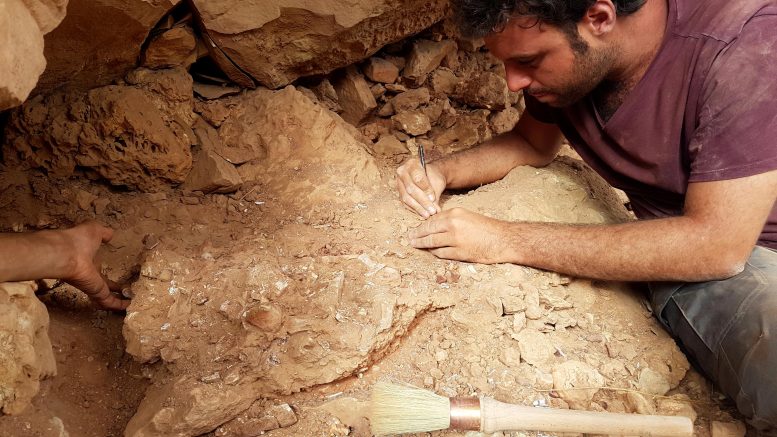
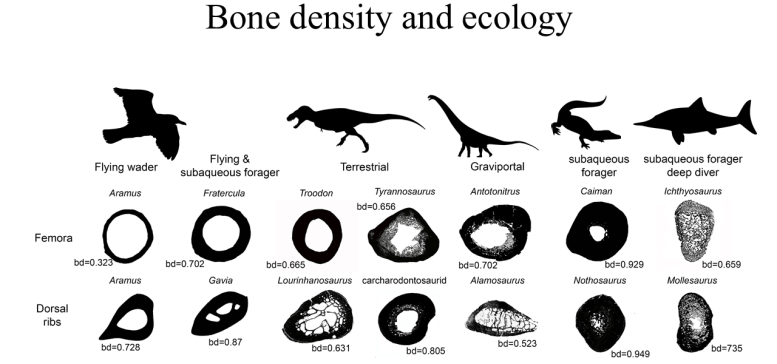
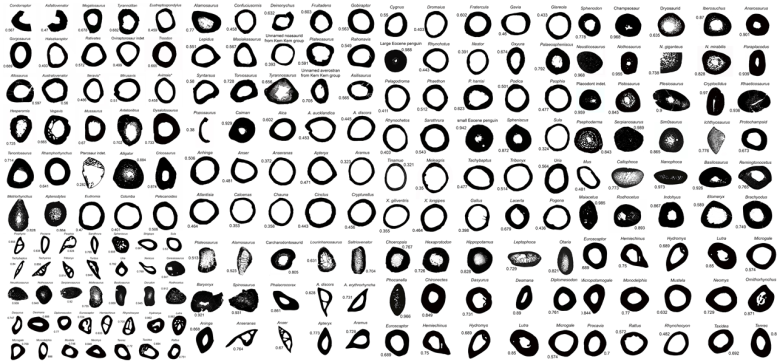
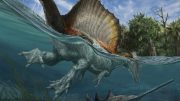
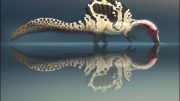
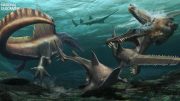
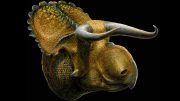
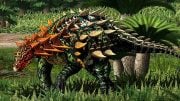

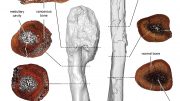
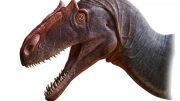
Babu G. Ranganathan*
(B.A. Bible/Biology)
MAKING SENSE OF DINOSAURS AND THE BIBLE
The Bible doesn’t mention everything under the Sun, but, interestingly, the Bible does give a description of a land animal in the Book of Job 40:15-24 that can only refer to what we now know as a “dinosaur.” The passage in Job says that the animal which God calls “Behemoth” has a tail like a cedar tree (no land animal today has a tail like a cedar tree), and bones that are like tubes of bronze and limbs like the bars of iron.
Dinosaurs may well have existed in the time of Job who lived only a few hundred years after the worldwide flood described in Genesis. Dinosaurs were created in the sixth day of creation week along with other beasts and man.
Before the worldwide flood, Noah was commanded to build an ark to save a remnant of human kind and other land forms of life. According to Genesis 6:14-16, the Ark was at least 450 feet long, 75 feet wide and 45 feet high. It was one long box that would be stable and couldn’t capsize or overturn during the ravaging period of the flood.
Noah wasn’t required to take every animal into the Ark, only two of each “kind,” male and female of the land animals. Many of the sea animals would have been able to survive through the flood. The first pair of dogs in the Ark would have carried the recessive and dominant genes for producing all the varieties of dogs we have today. The same would be the case with all the other animals. God says in Genesis 1 ten different times that all life must reproduce after its “kind.” We know from science that there are genetic limits to biological variations in natural species. A dog will always be a dog no matter how many varieties come into being. The genetic and biological similarities between all forms of life are due to a common Designer (God) Who designed similar functions for similar purposes in all of the various forms of life.
What about “Junk” DNA? The latest science shows that “Junk DNA” isn’t junk after all! It’s we who were ignorant of how useful these segments of DNA really are. Recent scientific research published in scientific journals such as Nature and RNA has revealed that the “non-coding” segments of DNA are essential in regulating gene expression (i.e. how, when, and where genes are expressed in the body).
God had created species as complete and fully functioning from the very beginning. They couldn’t survive any other way. A half-evolved dog, for example, wouldn’t be able to survive. Darwinian evolutionary theory would have us believe that, by the random forces of nature, partially-evolved species came into existence along with partially-evolved skin, muscles, nerves, tissues, organs and then survived over millions of years as they eventually became complete. What utter nonsense!
Noah didn’t have to seek for the animals. God said He would bring the animals to Noah. God may very well have caused the animals to hibernate in the Ark so feeding and taking care of them wouldn’t have to be a problem. No doubt, dinosaurs would have very easily fit in the Ark.
We can surmise from the Bible that conditions on the earth were ideal before the flood, but after the flood the world was a hostile place where severe competition was necessary for animals to survive. God had placed the genes in natural species for limited adaptation in so that they could survive through the changing environment on earth after the flood.
Genesis 7 says that much of the water that flooded the whole world came from under the ground. We know even today of vast reservoirs of water that are under the earth. Obviously, if the Genesis account is true, there was much greater amount of water underground in the earth’s past. Genesis 7 says that this water burst through the surface of the earth. The colossal effect changed the entire topography and climate of the earth. A major consequence of such a flood would have also been the Ice Age.
The Old Testament (i.e. Psalm 104) describes God as raising high mountains from the earth after the worldwide flood so that the waters would recede into the ocean basins. The tremendous velocity and pressure from such receding water is what most likely caused the formation of the majestic Grand Canyon packed with its billions of fossils.
The Bible says that the Ark landed somewhere in the mountains of Ararat where the modern nation of Turkey is now located. There have been reports from individual mountain climbers of having seen the Ark. The eyewitnesses claim that the Ark had split in two. But, there is no concrete evidence yet of the Ark’s existence.
If we should find the Ark, it would definitely be strong evidence for a worldwide flood. But, even without discovering the Ark we have physical evidence for a worldwide flood from the billions of fossils of plants and of animals in the earth.
Visit my latest Internet site: THE SCIENCE SUPPORTING CREATION (This site answers many arguments, both old and new, that have been used by evolutionists to support their theory)
Author of the popular Internet article, TRADITIONAL DOCTRINE OF HELL EVOLVED FROM GREEK ROOTS
*The author, Babu G. Ranganathan, has his bachelor’s degree with concentrations in theology and biology and has been recognized for his writings on religion and science in the 24th edition of Marquis “Who’s Who In The East.”
Why should there be a conflict between evolution and creation? If God set everything up (and I believe he did) why couldn’t he simply work through what he created instead of inserting fully formed life forms along the way? It’s not as if he didn’t have the time.
LOL!!!!!!!!!!!!!!!!!!!!Everyone knows the Ark has been found in Kentucky and turned into a carnival side show for idiots and the last I heard the county that helped finance it was facing bankruptcy.
For spinosaurus the question was allways if it was aquatic because has highly land feature fuse nasal .gator Nile crocodile are semi aquatic they can live on land allways and water allways .gator and Nile crocodile hunt on land a lot but they are not design like spinosaurus for land .fuse nasal not a predator feature it’s a defends feature to protect the skull from animal with legs fish do not have legs .the animal is alive in spinosaurus mouth before it kill it .it’s to prevent cheap shot kick gator Nile crocodile do find without a fuse nasal but when modern crocodilian go back only land they are going to need one that why one dwarf caiman has one dwarf caiman is a land crocodilian it has dinosaur tail the skull has same scientific name as spinosaurus it’s not that flat like the gator or Nile crocodile they hear like land mammal gator hear like whale .fuse nasal are very rare in mesoeucrocodylia a fossil gator type land mesoeucrocodylia had a fuse nasal the scientist use fuse nasal show that it is only a land animal in tetanuran the 3 finger dinosaur tyrannosaur is only tetanuran with fuse nasal the dwarf caiman spinosaurus is a tyrannosaur.in 4 finger dinosaur it allso is found most dinosaur were land animal .most sauropod were highly aquatic extreme aquatic they had smood skin and have gator skin tail but some were only land animal with heavy armor skin crocodilian are diverse .clearly spinosaurus is aquatic straight teeth they have gator tail .spinosauridae is the first mesoeucrocodylia clearly they were not aquatic as the gator it was not expected because of evolution in fact dinosaur support evolution because it’s a primitive gator.the gator is the greatest dinosaur ever the champ .spinosaurus is long snout crocodilian like the gharial and high skull like dwarf caiman a well known land crocodilian that why it has so much dinosaur feature .there is no mesoeucrocodylia with those feature but if know crocodilian you can know i can.spinosauridae probaly live simular like gator Nile crocodile but more on land .spinosaurus has gator tail not the land tail there is no tail bone to prevent it to go side to side .one dwarf caiman has this bone most predator tetanuran dinosaur has these bone too.dwarf caiman are not good swimmer dwarf caiman tail only can go up and down a highly bipedal feature not a swimming feature.spinosauridae snout is so long because it was not a good swimmer like modern crocodilian it allso has weaker bite no back up feature only 2 bones fuse to braincase gator has 6 like mammal they test the same because spinosauridae has longer snout the palate is bigger it’s a very strong skull but problem is when they go short skull they have to change nose size to keep strong bite which lead to them can not smell very well a down grade .gator no change they have back up.spinosaurus move the nose to eye a classic aquatic feature but if it’s really a aquatic feature .it’s common in crocodilian evolution move the nose yeah sometime land feature but most of time bite force feature the semi aquatic crocodilian move nose forward this one is highly aquatic a long snout crocodilian .gator nose is in the middle not forward that place allways a problem with mesoeucrocodylia gator nose is fuse a downgrade less oxygen but they have high tech moving pubis hip that help.Nile crocodile nose is not fuse like all great mammal predator .fuse nose is a primitive feature like cold blooded reptile most dinosaur have fuse nose .dwarf crocodile nose is fuse all caiman nose is not fuse Chinese gator American gator is fuse.crocodile is more closer to spinosauridae .alligator is a advance modern crocodilian caiman is a alligator .fuse nose is sign the animal is cold blooded but all dinosaur were warm blooded like the greAtest dinosaur ever the gator .spinosauridae is death roll animal the death roll is design to kill bigger animal not fish spinosaurus was king of dismember animal like there descandants the gator we seen the YouTube video that why jaws are like the modern crocodilian it’s a gator feature to swallow big animal after dismember by death roll spinosauridae is a true mesoeucrocodylia .spinosaurus teeth is the same heterodont teeth like Nile crocodile teeth the small teeth is to hold the bigger teeth is to crush bone .spinosauridae was great predator it is made to last they had main feature of the gator what made them great .mesoeucrocodylia is the top dinosaur .there is no evidence spinosaurus had small leg that story is Hollywood fourth trochanter science is in the books it’s legs was like baryonyx spinosaurus leg smaller than most tetanuran but in the same rage that why fourth trochanter is the same size if the femur smaller than the tibia the fourth trochanter must be reduce they know that because it happen allready in compsognathus mesoeucrocodylia macelognathus and birds they think fourth trochanter of birds act same way as thecodont .spinosaurus small legs like carnotaurus show it is turn into a gator.the new species spinosauridae like baryonyx has the gator tail baryonyx type is true ancestor of the gator.modern crocodilian is only dinosaur alive.spinosauridae live.fuse nasal of spinosaurus is a way to tell different from baryonyx .